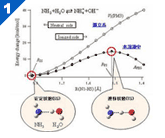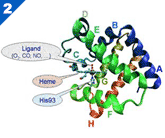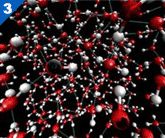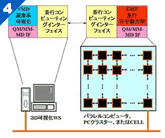| [Site Map][Japanese][English] |
-
Student Recruitment
-
Project
- Computational Science
- Nonequilibrium Systems
- Chemical Reactions
- Macroscopic Chemical Phenomena
- Life Phenomena
- Multiscale Information Processing
- Industry Applications
- Meetings
- FY 2022
- FY 2021
- FY 2020
- FY 2019
- FY 2018
- FY 2017
- FY 2016
- FY 2015
- FY 2014
- FY 2013
- FY 2012
- FY 2011
- FY 2010
- FY 2009
- FY 2008
- FY 2007
- FY 2006
- FY 2005
- FY 2004
- FY 2003
- FY 2000
- FY 2019
- FY 2018
- FY 2017
- FY 2016
- FY 2015
- FY 2014
- FY 2013
- FY 2012
- FY 2011
- FY 2010
- FY 2009
- FY 2008
- FY 2007
- FY 2004-2006
- FY 2003
ConceptResearchesMeetings & Seminars
Open Seminars
References
Facilities
-
People
- Staff
- PostDocs & Students
- OB & OG
- OB & OG Messages
- FY 2018-
- FY 2015-2017
- FY 1999-2014
MembersSnapshots -
Access
-
Link
Introduction
Prof. Masataka Nagaoka, "Nagaoka Laboratory, Materials Informatics Group, Division of Complex Systems Science"
We have been studying the frontiers of computational science in "'chemical' reaction dynamics",
theoretically and visually.
While the word "chemistry" might bring to mind images of a 'laboratory', 'white robe', and 'flasks', one
major field of today's computational science is occupied with such "chemistry," which seems at a glance to
be quite irrelevant to computers. In fact, computational chemistry and theoretical chemistry, promoted by
high use of computer technology, are traditional in the world-class research conducted in Japan. This can
be partially recognized from the Nobel Prize in Chemistry awarded to Kenichi Fukui in 1981 for the
'Frontier Electron Theory'.
Under the circumstances, in our lab, we are aiming at clarifying unknown chemical phenomena with
developing some new computational scientific methods which are able to deal with time-dependent and
statistical characteristics, in addition to today's elaborate quantum chemical methods. More concretely,
there are the following four main research themes.
 Four main research themes that Nagaoka Lab is heading for.
Four main research themes that Nagaoka Lab is heading for.
Kramers-Fokker-Planck equation for multi-atomic molecules and maximum entropy method
Ab initio computational techniques for those systems with super-multi degrees of freedom
Recent few years have made it possible for one to experimentally observe quantitatively ultrahigh speed
chemical phenomena occurring in the time scale of one over thousand trillions second, i.e., femtosecond.
Moreover, new-type supercomputers and brand-new networking techniques have enabled us to execute "ab
initio" multi-scale simulations of complex materials phenomena
In my lab, a variety of students and posdocs who came to join in from many different universities and
research fields with various backgrounds, to attack:
(1) Construction and demonstration of theoretical methods in "ab initio" computational sciences,
connecting to understanding "life phenomena".
(2) Atomistic clarification in the appearance mechanism of "nonequilibrium and nonstationary phenomena".
Dreaming of accomplishing these objectives, a number of daring challenges are now being done repeatedly,
day and night, to target at understanding those "amazing performances done by materials in the atomistic
resolution" which we are now able to observe and then inspect experimentally.






